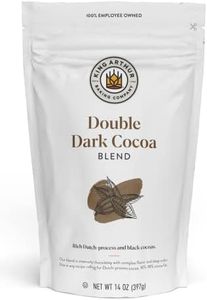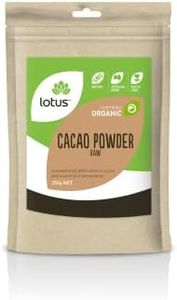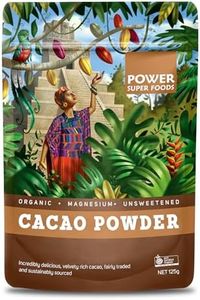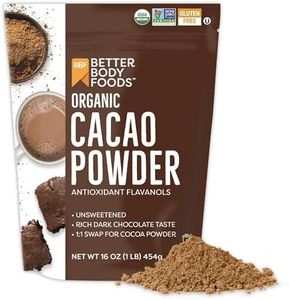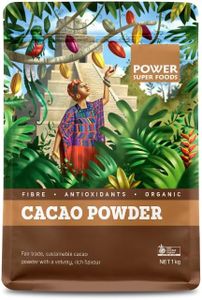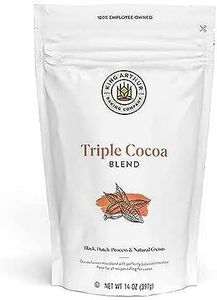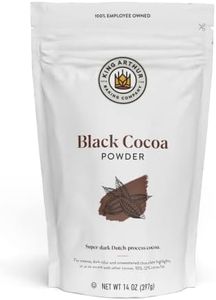We Use CookiesWe use cookies to enhance the security, performance,
functionality and for analytical and promotional activities. By continuing to browse this site you
are agreeing to our privacy policy
10 Best Cocoa Powders
From leading brands and best sellers available on the web.Buying Guide for the Best Cocoa Powders
Choosing the right cocoa powder can make a big difference in your baking, cooking, and beverage experience. With a variety of options available, it's important to understand the main characteristics that set different cocoa powders apart. Consider what type of recipes you'll be using it for, whether you want a rich flavor for baking, a smooth texture for drinking, or particular dietary needs. Knowing the key specs will help you confidently pick a cocoa powder that suits your kitchen and your taste buds.Type (Natural vs. Dutch-Processed)The primary difference in cocoa powders is whether they're natural or Dutch-processed. Natural cocoa powder is simply roasted cacao beans, ground into a powder, and has a lighter color with a sharper, more acidic flavor. Dutch-processed cocoa is treated with an alkalizing agent to neutralize acidity, making its color darker and its flavor milder and smoother. If a recipe doesn't specify which type, consider that natural cocoa works best with baking soda, while Dutch-processed pairs better with baking powder. Decide based on your flavor preference—zesty and bright, or mellow and deep—and what your favorite recipes require.
Fat ContentCocoa powder naturally contains cocoa butter (the fat from the cacao bean), but products vary in how much fat is left after processing. Standard cocoa powders have about 10-12% fat, but there are low-fat versions as well as richer, 'full-fat' powders with up to 22% fat. Higher fat content tends to give a richer mouthfeel and more intense chocolate flavor, especially important in brownies and cakes. For lighter baking or if you prefer a leaner product, lower fat versions are available. Your choice should align with the richness you want in your finished dish.
Flavor IntensityNot all cocoa powders are equally strong in flavor. Some are bold and bitter, others are mild or even slightly sweet. This usually depends on bean variety, roasting technique, and processing method. If you love deep, dark chocolatey notes, look for cocoa that emphasizes 'rich,' 'dark,' or 'intense' in its description. For lighter, more subtle treats, a milder cocoa is preferable. Consider your family's or your taste preferences and the primary use—drinking cocoa, delicate desserts, or robust bakes—when judging this spec.
SolubilitySolubility refers to how easily the powder dissolves in liquids. Some cocoa powders are finely milled and disperse well in both hot and cold liquids, perfect for smooth beverages or frostings. Others may clump or settle, creating gritty textures unless carefully blended. For hot cocoa and smooth sauces, prioritize high solubility. For baking where it's whisked with flour, this may matter less but still can affect texture. Think about how you plan to use the powder most often.
Additives (Sweeteners, Flavors, Fillers)While pure cocoa powder contains just one ingredient, some products add sugar, flavorings, milk solids, or anti-caking agents. If you want pure cocoa flavor or have dietary restrictions, look for a product with only cocoa powder listed. For instant cocoa or pre-sweetened powders for drinking, additives may be expected. Your intended use—as an ingredient in recipes or as a ready-to-use drink—will guide you here.

